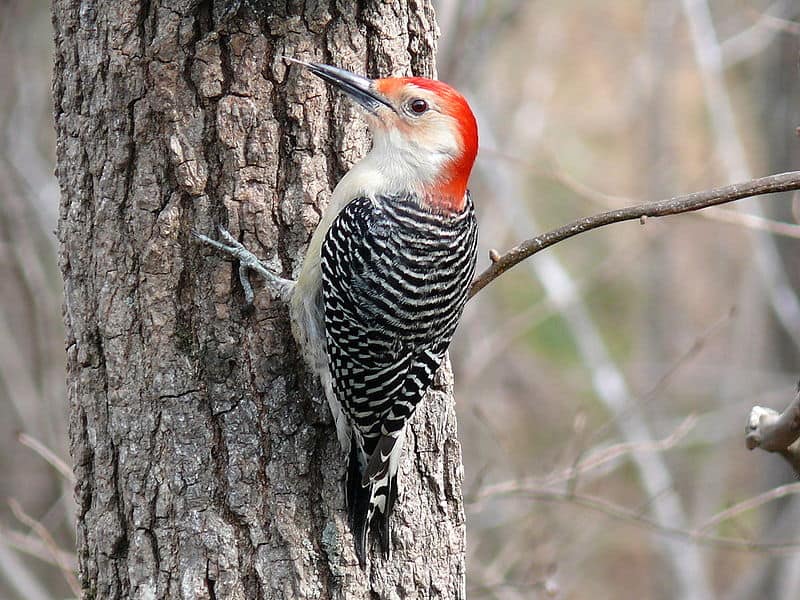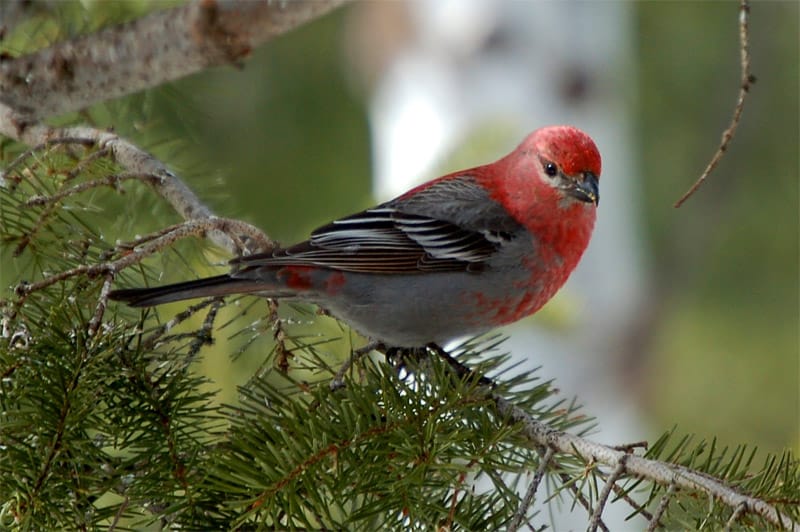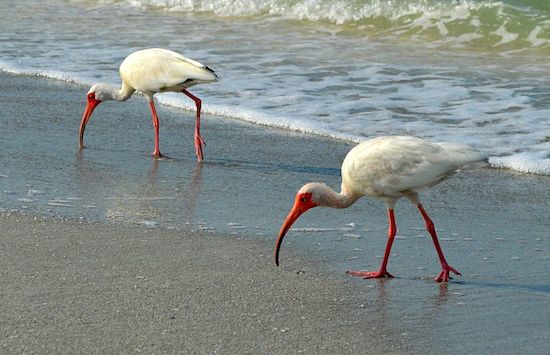It is immediately recognized by the black-and-white zebra barring on the back and the red cowl, which is limited to the back of the head in females. Tolerant of humans, it is a regular visitor to feeders, favoring sunflower seed, suet, and fruit.
Highly vocal, the most common call is a loud, rolling churr, less sharp than that of the similar red-headed woodpecker. They also make softer kek notes in short series, similar to the call of a flicker. Red-bellied woodpeckers have slowly extended their range north in the past fifty years and are now found to extreme southern Canada.
Look for
The red-bellied woodpecker is so common, vocal, and eye-catching that it might be elected “most familiar woodpecker” in a vote of bird watchers in the eastern United States. Although occasionally mis-iden-ti-fied as a red-headed woodpecker because of the male redbelly’s bill-to-nape stripe of bright red, the red-bellied woodpecker actually is quite different in appearance—and much more common—than the real red-headed woodpecker, which sports an all-red head.
A medium-sized (9 ¼ inches long) woodpecker with a stout, chisel-shaped bill and a zebra pattern of black-and-white horizontal strips on the back, the red-bellied woodpecker is named for a feature we rarely see—a light wash of pink or red on its belly. Hitching up tree trunks with the aid of its strong feet and stiff tail, the bird’s red belly is almost always obscured.
Adult males have a solid strip of red from the top of the bill and head and down the back of the neck (the nape). Females have a red nape, but are brownish on the top of the head.
Listen for
The redbelly’s loud, rich call sounds like qurrrr, and its longer version is more rattling and harsher—chrr, chrr, chrchrchrchr. Avid drummers, they sometimes use metal chimneys and drainpipes for maximum noise.
Find it
A year-round resident across the eastern United States, the redbelly is an adaptable bird, found wherever there are mature trees. They do not migrate, though some northern birds may move southward in winter.
Feed it
The redbelly is an expert at excavating insects from trees using its bill as a chisel and its long, barbed tongue to extract food items. It will also eat berries, fruits, nuts, tree sap, salamanders, mice, and even small nestling birds. At bird-feeding stations, redbellies relish peanuts, suet, sunflower seeds, and cracked corn.
Nesting Behavior
The male redbelly begins courtship by drumming (a rapid pounding with the bill) on a tree trunk or branch to attract the female’s attention. Both male and female excavate the nest cavity, which is usually located in a dead tree below an overhanging branch. The 8- to 12-inch deep cavity will accommodate four eggs. Incubation duties are shared and last about 12 days.
Nestlings are fed in the nest cavity by both parents for almost a month before they fledge; afterward, they remain near the nest and are fed by the parents for several more weeks. Nest hole competition from European starlings can be fierce and usually results in the redbellies being evicted and forced to excavate a new nest elsewhere.
WOW!
This species will eat almost anything, including insects, small fish, tree frogs, and even other birds and bird eggs!
Hear it:




